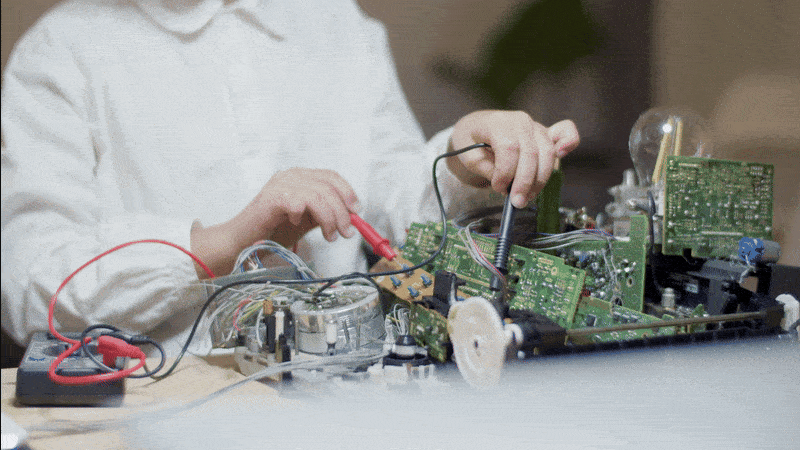Introduction:
Embarking on a career
as a Design Verification Engineer offers an intriguing journey into the heart
of semiconductor engineering. Design Verification Engineer career prospects are
filled with opportunities to validate and ensure the functionality of intricate
digital designs. This analysis delves into the multifaceted role of a Design
Verification Engineer, exploring this profession's challenges, responsibilities, and rewarding aspects.
Aspiring individuals
entering the realm of design verification engineer careers encounter a
dynamic field where they play a crucial role in guaranteeing the integrity and
reliability of digital designs. From creating comprehensive test plans to
meticulously analyzing simulation results, Design Verification Engineers contribute
significantly to the success of semiconductor projects. Join us as we unravel
the intricacies of this captivating career path, offering insights into the
essential skills, qualifications, and growth opportunities for aspiring
engineers in the ever-evolving landscape of semiconductor design
verification.
Understanding the Role
of a Design Verification Engineer:
In a design
verification engineer career, the role of a Design Verification Engineer
(DVE) is paramount. DVEs are responsible for ensuring the correctness and
functionality of digital designs before fabrication. They meticulously create
test plans, develop test benches, and write test cases to validate design
specifications. Running simulations, debugging, and analyzing coverage are
integral to their daily tasks. DVEs play a critical role in identifying
and resolving bugs, and collaborating closely with design teams to ensure the
integrity of the design. Their expertise in hardware description languages and
verification methodologies is crucial for successful verification. As key
contributors to the semiconductor industry, Design Verification Engineers
uphold the highest standards of quality and reliability in digital designs,
making their role indispensable in the career landscape of design verification
engineers.
Design Verification Engineer Job Description:
The
role of a Design Verification Engineer is critical in ensuring the
functionality and reliability of digital designs before fabrication. This
article explores the comprehensive design verification engineer job
description, outlining responsibilities, skills, and career prospects. From
creating test plans to running simulations and debugging, Design Verification
Engineers play a pivotal role in verifying the correctness and robustness of
complex digital designs. With a keen attention to detail and strong
problem-solving skills, professionals in this role contribute significantly to
the success of semiconductor projects. Join us as we delve deeper into the
world of design verification engineering.
Creating Test Plans:
Design Verification Engineer
job entails
crafting meticulous test plans to ensure thorough validation of digital
designs. These plans outline test scenarios, conditions, and methodologies
essential for verifying design functionality, performance, and compliance. By
meticulously crafting test plans, Design Verification Engineers lay the
foundation for robust verification processes, efficiently identifying and resolving design issues. This critical aspect of the job
ensures that digital designs meet stringent quality standards before
fabrication, minimizing the risk of errors and enhancing product reliability.
Developing Testbenches:
As a crucial aspect of the design
verification engineer job, developing testbenches is essential. Testbenches
serve as the infrastructure for applying stimuli to the design under test (DUT)
and monitoring its responses. Design verification engineers meticulously craft
test benches using hardware description languages like Verilog or
SystemVerilog, ensuring thorough verification. These test benches enable the
execution of comprehensive test plans, covering functional, performance, and
corner-case scenarios. By creating robust test benches, design verification
engineers can validate the functionality and compliance of the design, ensuring
its reliability and performance in real-world applications.
Writing Testcases:
Test cases are specific scenarios designed to
exercise different features and functionalities of the DUT. Design Verification
Engineers meticulously write and debug test cases to ensure they accurately
represent the intended behavior of the design.
Running Simulations:
Simulations are performed using advanced
simulation tools to execute the testbenches and verify the behavior of the DUT.
Design Verification Engineers analyze simulation results, identify bugs, and
collaborate with design teams to resolve issues.
Debugging and Troubleshooting:
Debugging is a critical aspect of the
verification process. Design Verification Engineers employ various debugging
techniques, including waveform analysis, assertion-based verification, and
debugging tools, to pinpoint and resolve issues efficiently.
Coverage Analysis:
Coverage metrics assess the completeness of the
verification process by tracking which parts of the design have been exercised
during testing. Design Verification Engineers analyze coverage reports to identify
gaps in the test bench and enhance test coverage.
Regression Testing:
Regression testing involves re-running previously executed testcases to ensure that recent design changes have not introduced regressions or unintended side effects. Design Verification Engineers manage regression suites and automate regression testing to streamline the verification process.
Design Verification
Engineer Career Path:
Entry-Level Engineer:
Entry-level Design Verification Engineers
typically start with basic verification tasks, such as running simulations,
writing test cases, and assisting senior engineers in testbench development.
Mid-Level Engineer:
Mid-level Design Verification Engineers take on
more complex verification tasks, such as developing test benches, creating test
plans, and leading verification efforts for specific design blocks or modules.
Senior Engineer/Lead:
Senior Design Verification Engineers or Leads
are responsible for overseeing entire verification projects, managing
verification teams, defining verification methodologies, and ensuring the
successful completion of verification goals.
Manager/Director:
Design Verification Managers or Directors lead verification teams, set strategic direction for verification projects, allocate resources, and collaborate with other engineering teams to deliver high-quality products on schedule.
Skills and
Qualifications Required:
Proficiency in HDLs:
Design Verification Engineers must have strong
programming skills in hardware description languages such as Verilog,
SystemVerilog, or VHDL.
Understanding of Verification Methodologies:
Familiarity with verification methodologies like
UVM, OVM (Open Verification Methodology), or VMM (Verification Methodology
Manual) is essential for efficient verification.
Problem-Solving Skills:
Design Verification Engineers should possess
excellent problem-solving abilities to identify and debug complex issues in
digital designs.
Communication and Collaboration:
Effective communication and collaboration skills
are crucial for interacting with design teams, presenting verification results,
and resolving cross-functional issues.
Attention to Detail:
Attention to detail is vital in verification to
ensure that all aspects of the design are thoroughly tested and verified.
Knowledge of Semiconductor Fundamentals:
A solid understanding of semiconductor fundamentals, digital design principles, and computer architecture is beneficial for Design Verification Engineers.
Career Growth Opportunities:
The field of Design Verification Engineering offers abundant opportunities for career growth and advancement. As professionals gain experience and expertise, they may transition into roles such as Verification Lead, Verification Manager, or even pursue managerial positions in engineering leadership.
Conclusion:
A career as a Design
Verification Engineer offers a dynamic and rewarding journey for individuals
passionate about semiconductor engineering and digital design verification.
With the right skills, qualifications, and dedication, aspiring engineers can
embark on a fulfilling career path in verification, contributing to the
development of cutting-edge technology in the semiconductor industry. Whether
starting as an entry-level engineer or aspiring to lead verification teams, the
opportunities for growth and impact are boundless in this exciting field.

VLSI Career Roadmap for Engineering Graduates: Step-by-Step Guide
A complete VLSI career roadmap for engineering graduates. Learn skills, domains, tools, and steps to become a successful semiconductor engineer in the chip design industry.

Title: Top VLSI Career Paths for 2026 Graduates and Best Semiconductor Companies in India
Meta Description: Explore the top VLSI career options for 2026 engineering graduates and discover India’s best semiconductor companies for high-paying jobs. Learn about roles, skills, and top recruites

Why VLSI Engineers Must Care About Side-Channel Attacks, Secure Design, Verification, and Hardware Mitigation
Learn why VLSI engineers must prioritize side-channel attacks, secure design, verification, and mitigation to build trustworthy, resilient, and future-ready hardware systems.

VLSI Skills Every Engineering Graduate Must Learn to Stay Ahead in the Semiconductor Race
Discover the must-learn VLSI skills for engineering graduates to stay ahead in the semiconductor industry. Boost your career with essential chip design and verification skills.
_11zon.jpg)
How Verification Engineers Master Tools and Languages Used in the VLSI Industry
Discover how verification engineers master essential tools, languages, and methodologies in VLSI industry. Learn skills needed to stay competitive and future-ready.
Hours
Copyright 2025 © VLSI Technologies Private Limited
Designed and developed by KandraDigitalCopyright 2025 © VLSI Technologies Private Limited
Designed, Developed & Marketing by KandraDigital
